Opened in the autumn of 2021, the Autism Nature Trail at Letchworth State Park is breaking new ground for outdoor accessibility and education, especially for school-age children with autism. The choice-driven, 1-mile-long, ADA-compliant loop trail includes an orienting trailhead pavilion, wayfinding markers, “alone zones,” and eight interactive nature stations for visitors to play, practice sensory perception, and challenge themselves in a safe, easy-to-navigate, deep nature environment out of sight or sound of human activity beyond the trail.
The Autism Nature Trail – ANT for short – is the brainchild of three friends, now affectionately known as the ANT Aunts: Loren Penman, Susan Herrnstein, and Gail Serventi. The idea for the trail started with a conversation Penman had in 2014 with a neighbor, whose grandson has autism.
“At age 7, the grandson was still without language and in a state of almost constant agitation, except, his grandmother said, when he would come to visit her and she would take him to Letchworth,” said Penman, a retired educator and school administrator.
Soon after that conversation, Penman was talking with Herrnstein, whose grandson also has autism. Whenever her grandson would come from his home in New York City to visit her in the Genesee Valley, he would beg her to visit Letchworth State Park. What was it, the women wondered, that made the park such a calming place for these children?
To answer that question, Penman and Herrnstein reached out to Michael Terman, a professor of clinical psychology in psychiatry at Columbia University. He suggested the park’s pine forests and moving water might have beneficial effects on visitors, especially those with autism. The park encompasses more than 14,350 acres of forests, and the Genesee River flows through Letchworth, where there are several waterfalls.
“Susan and I wondered what could we do to share this calming effect of Letchworth State Park with persons with autism and those who care for them,” said Penman. “Suppose there was a nature trail, designed specifically for persons with autism spectrum disorder and other developmental differences. What would it look like? And what could we do to bring it to fruition?”
Big Dreams
Penman sent what she describes as a “hail Mary” email to Temple Grandin at Colorado State University. A prominent scientist, author, and speaker on both autism and animal welfare, Grandin has promoted greater public understanding of autism by sharing her own experiences. Penman was surprised – and thrilled – to receive a call from Grandin a couple of weeks later.
“I was starstruck,” said Penman. “But I had to concentrate, because this icon in the world of autism was telling me that she was excited about our idea and that she wasn’t aware of anything else like it anywhere.”
During that call, Grandin offered several suggestions, which the ANT Aunts would eventually incorporate into the design of the trail. Her advice included designing an entrance to the trail that would orient visitors, designing the trail as a loop, and providing challenges for people who may not have been on a nature trail before.
“Look for program planners who have experience in the outdoors and an expertise in autism, not one or the other. They may be hard to find, but they will be worth the search,” Grandin told Penman. “Build in predictability and choice, including opportunities to opt out of an experience.”
Penman and Herrnstein next spoke with Gail Serventi, a speech and language pathologist who had just retired from the State University of New York College at Geneseo – and who would become the third ANT Aunt. Serventi gathered a volunteer advisory panel of academics and practitioners in speech, occupational, and physical therapy; autism; and special education. Rick Hauser, an architect based in the Genesee Valley, drew up some concepts for the trail, and the Autism Nature Trail was born.
The three women proposed the idea for the ANT to the New York State Office of Parks, Recreation, and Historic Preservation in 2016. After getting the green light, they set about the monumental task of raising some $3.7 million, all through private donations, to build the trail and to create an endowment fund to support it into perpetuity. The Autism Nature Trail officially opened with a ribbon cutting on October 1, 2021.
ANT Design
The ANT is designed so that people with autism or physical challenges can comfortably navigate it. Its main surface is crushed stone dust, which supports many movement aides, including wheelchairs, walkers, and strollers.
If viewed from above, the trailhead pavilion resembles a funnel, designed to gradually orient visitors, rather than suddenly thrust them into a deep nature experience. Planted with native shrubs, the first third of the ANT resembles a city park, then gives way to a more natural landscape. Wayfinding markers – three stacked stones resembling the body segments of an ant – are visible from each part of the trail to assure patrons that they are in the right place and not lost.
The trail comprises eight sensory stations, each designed to be exciting, engaging, and to encourage visitors to use senses in ways they might not have before. These trail sections progress from the Sensory Station to the Sunshine Slope, the Music Circle, Reflection Knoll, Meadow Run & Climb, Design Zone, Playful Path, and finally the Celebration Station.
The Sensory Station features natural materials – from moss and cut plants, to antlers and bones, pinecones, fragrant dried flowers, crunchy leaves, and more – for guests to explore using their senses. Moving on to the Sunshine Slope, visitors will find three colorful cuddle cocoons hanging from support beams. The cocoons are weatherproof and gently envelop guests, allowing them to self-propel into a light rocking or revolving motion. From the slightly elevated position of this station, visitors can see the trailhead pavilion and the path ahead, which allows them to recognize that some challenges have passed, and they can continue along the trail with some basic familiarity.
In the Music Circle, visitors may experiment with making sounds with a selection of permanent, nature-inspired percussion instruments. Some are wood, some metallic, and all are designed to make short, low-toned sounds that do not carry far or linger in the air. For visitors who may be overwhelmed by the noise, an alternate path, called an Alone Zone, circumvents this station and leads to the rest of the trail.
The fourth station, Reflection Knoll, is tucked into a peaceful, natural ring of pines, where large rocks – for sitting or climbing – are arranged in circles. Roughly halfway through the trail, this station is designed to give activity leaders an opportunity to sit visitors or school groups down and to re-center their attention, have a snack, or resolve a meltdown. Every third rock in the large circle has a carving of a different animal, allowing guests the potential challenge of finding the pattern. When viewed from above, the circles – consistent with the design of the wayfinding markers – suggest the head of an ant, with the large circle representing the head and the small circles representing the antennae. A cut-through trail here allows visitors to easily return to the nature center if they need to.
The ANT’s fifth station is the Meadow Run & Climb, which marks the beginning of the trail’s more physically active section. Visitors may climb steps or take a switchback ramp to the top of a hill of grasses and wildflowers, then run or roll down the gentle slope. Some balance challenges wait below, including a spider web–shaped net, low log rounds for hopping, and balance beams. Nearby are rows of willow saplings. When the trees become tall enough, trail keepers will weave them into a living bower tunnel and dome.
In the Design Zone, visitors can build with natural materials such as branches, sticks, small rocks, and stones. Giant bird nests, shelters, mock campfires, and fairy houses spring up overnight.
Next along the trail is the Playful Path. The ANT’s main crushed stone dust path runs alongside many different trail surfaces here, including river stones, sand, gravel, flat stones, and log rounds placed both on end and horizontally. Visitors can practice moving over these potentially unfamiliar and challenging surfaces, all within a step of the familiar stone dust.
The eighth and final station along the ANT is the Celebration Station. As the trail rounds back into the trailhead pavilion, visitors may leave behind any objects they have picked up and carried with them on the trail. In the spirit of Letchworth State Park’s “carry in, carry out” ethic, volunteers return any natural materials left at the Celebration Station to the trail for others to find. Visitors can also write on the chalkboard here, sharing words of encouragement for others who might soon start the trail where they ended.
Making a Difference
Since the trail opened, ANT organizers and volunteers have been gratified to see visitors of various ages and abilities explore the different stations – and, by connection, the natural environment surrounding the trail. They have watched as children with autism use the trail to overcome specific anxieties and have heard from families who use the ANT as a way to enjoy the outdoors together.
Penman recalled one young visitor who was anxious about walking over fallen branches. During visits to the ANT, the boy practiced traversing the boulders and logs that are part of the Playful Path section of the trail. Gradually, he became confident enough in his newfound skill to join his family on longer hikes in Letchworth State Park.
Other visitors have shared stories about visiting the ANT, both with children who have autism and with family members and friends who do not.
“I just wanted to reach out and say how wonderful the Autism Nature Trail was, from the Music Circle to the Playful Path,” said Amber Seifert, whose 4-year-old daughter has autism. “All of it was thought out and absolutely beautiful. Thank you for creating such a welcoming environment for all of us. We loved it. It brought us all such joy. My daughter felt so comfortable and had such an amazing time. I also went with three other children in their teens who do not have autism and they loved it just the same.”
Penman asked David Roach, a local attorney, to join the ANT Board of Directors. He agreed to do so after visiting the trail, and he wrote: “There is perhaps an unintended magic to this space. It strikes me, personally, as an interactive work of art that at once calms and fascinates. It is truly wonderful.”
While the impetus behind the creation of the ANT was to cater to visitors with autism, others have also taken advantage of the trail’s unique accessibility to nature. Older visitors walk the trail in all seasons, some using canes and walkers. Parents and other caregivers of young children walk along the trail with strollers. Patients in physical therapy or who are practicing with new prosthetics use the trail’s level surface and balance challenges to hone their movement skills.
The ANT is unique in the United States – for now – but the ANT Aunts hope similar trails will open in other areas. They encourage others to emulate this model and to create more trails and experiences for all people, especially those who might otherwise have limited access to the woods, to practice movement, comfortably explore with the senses, and find peace.


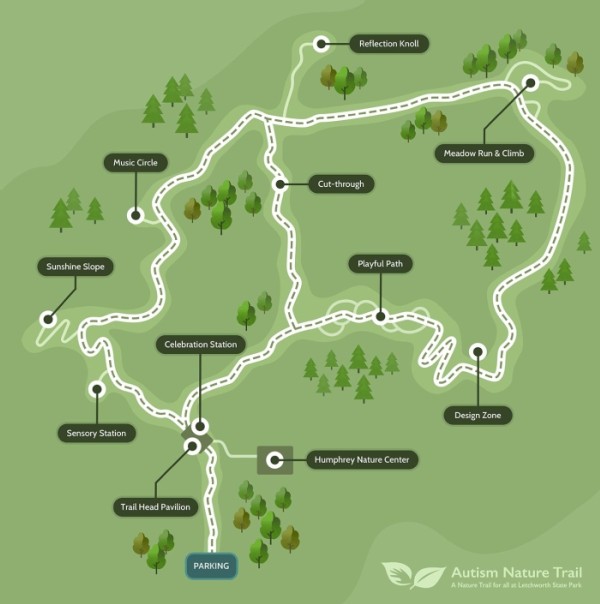
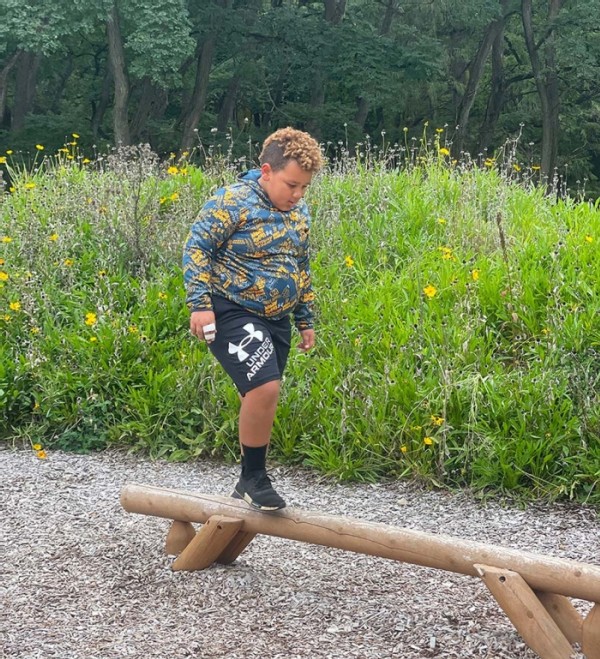
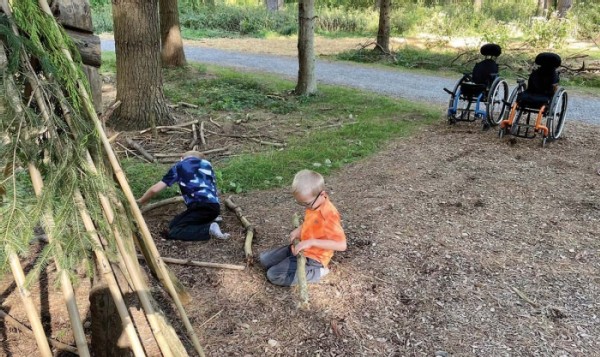
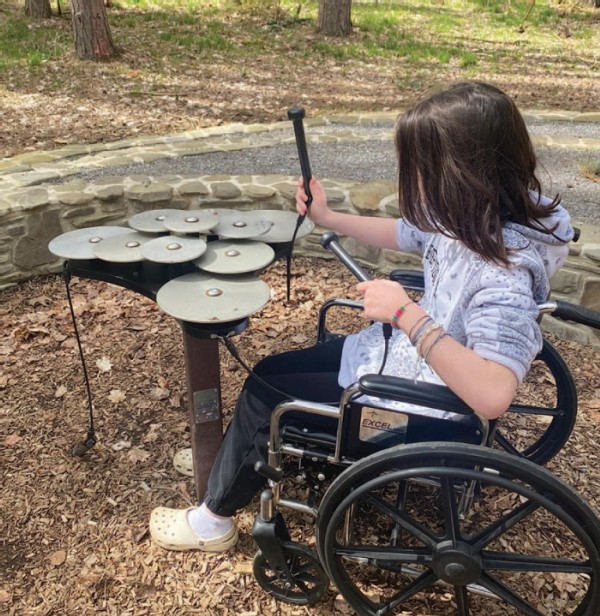
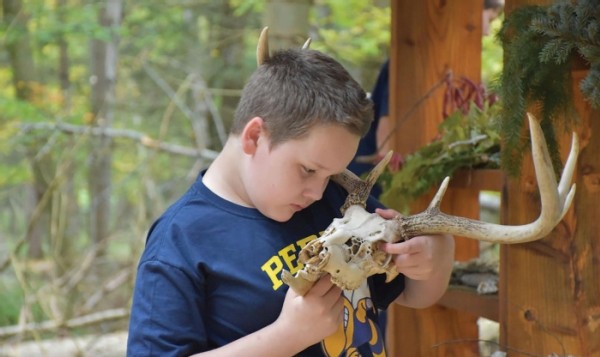
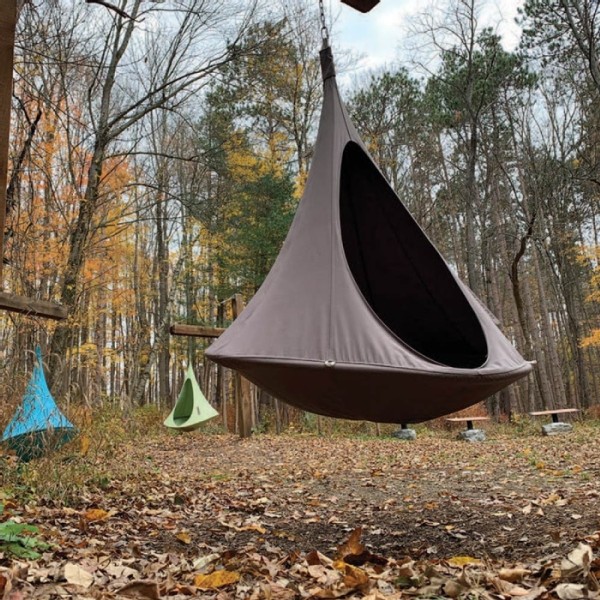
Discussion *